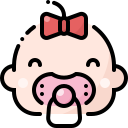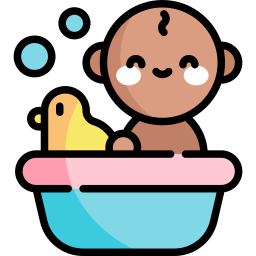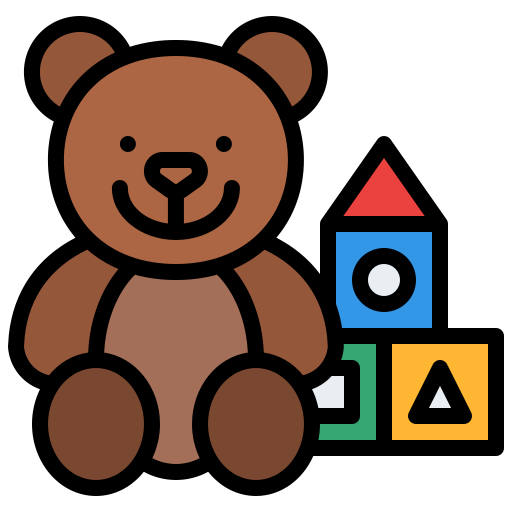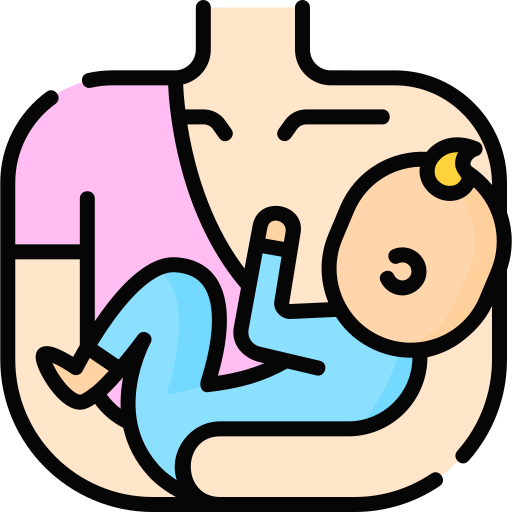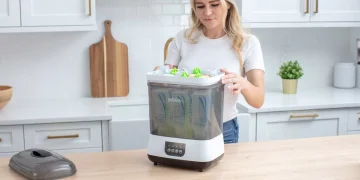Cradle cap also known as Seborrheic Dermatitis in adults is a common scalp condition experienced by babies in the first few months of their life. Don’t worry it may sound intimidating but it is not harmful or contagious.
This article provides a guide on how to escape cradle cap by following a few simple steps. But before doing that it is important to understand what cradle cap is, its causes, and symptoms.
What Is Cradle Cap?
Cradle cap in babies also called infantile seborrheic dermatitis appears as yellow or brown crusty, scaly, and greasy patches on the baby’s scalp. Cradle cap can also appear behind the ears, on the eyebrows, and diaper area of the baby.
It usually appears in the first few weeks or months of a baby’s birth and resolves before the baby’s first birthday with proper care but sometimes it may persist.
Symptoms Of Cradle Cap
Some of the most prominent symptoms of cradle cap are:
- Greasy scaly patches on the scalp, eyebrows or forehead
- Redness
- Mild inflammation
- Yellow or brown color scales
What Causes Cradle Cap
The exact cause of cradle cap is still not known but it is believed to be caused by sebaceous glands.
These glands are already present in the skin and are responsible for producing oil like substance called sebum.
When these sebaceous glands produce excess sebum, it provides a breeding ground for malassezia yeast. This yeast when combines with sebum causes irritation and flaking.
These glands are also triggered by the mother’s hormones that stay in the baby’s body after the birth.
Cradle Cap In Adults
Cradle cap in adults is refered to as seborrheic dermatitis. It causes crusty, dry patches of skin on the scalp that flake. These flakes look quiet similar to the ones you experience in dandruff.
While dandruff and seborrheic dermatitis may look similar the key differences between them are that sebborheic dermatitis is a severe case of dandruff, and the flakes are of yellow or brown color, while in dandruff the flakes are of white color.
The same malassezia yeast that causes cradle cap in babies causes it in adults. So the treatment is also similar. Using a medicated shampoo for cradle cap that contains zinc pyrithione will help control its flaking, scaling, and crusting in adults.
In severe cases of adult cradle cap the doctor may prescribe oral anti-fungal medication, corticosteroid cream or a topical steroids.
How To Escape Cradle Cap
Now that we know what is cradle cap lets delve into how to escape it. Most effective ways to get rid of cradle cap in babies are:
- Shampoo Regularly
Washing your baby’s hair and scalp regularly with a gentle and mild baby shampoo is the first step to get rid of cradle cap.
A shampoo that is free from harsh chemicals and contains pyrithione zinc is the best cradle cap shampoo for babies, which you should use for your children.
While washing baby’s hair use your fingers to gently massage the shampoo into the scalp, this will help lossen up the scales.
Rinse thoroughly to remove shampoo properly as residue can worsen baby’s cradle cap.
- Brush Away The Scales
Use a soft bristled brush or a cradle cap comb to gently lossen the scales. Regular brushing also prevents future scale buildups.
The best time to do it is while bathing th baby. The scales become soft and easy to remove.
Don’t be too harsh while brushing or combing the hair as this can cause hair loss and irritation.
- Consult Your Pediatrician
If you suspect that cradle cap is spreading to other parts of the body or is becoming severe, then it a great option to consult the prdiatrician. They will accurately diagnose baby’s skin condition and provide the right treatment plan for it.
Psoraisis and eczema can also be mistaken by cradle cap in babies So proper diagnose is essential for treating the issue.
Health Instructions To Manage Cradle Cap
1. Gentle Scalp Care
Taking care of the baby’s scalp is essential to prevent cradle cap or any other scalp issue like dandruff. Keeping the hair clean by washing them regularly with a mild baby shampoo is the key.
By keeping the hair clean baby’s scalp can be protected from future buildup of scales and any other infection caused by malassezia yeast.
2. Keep the Scalp Dry
Moisture works as a breading ground for malassezia yeast so it is important to keep the scalp dry. Especially after bath time, pat dry the scalp with a towel.
If you suspect your baby’s head gets sweaty or moist often, use a cloth or tissue to keep it dry throughout the day.
3. Avoid Harsh Products
Baby’s have sensitive skin so choosing the right product for them is vital. Option for baby products like shampoo and lotion that are free from any harsh chemicals.
Cradle cap shampoo that is fragrance-free, paraben-free, dye-free, sulfate-free, and gluten-free is most suitable for baby’s hair and scalp. Using products with harsh chemicals can worsen baby’s cradle cap.
4. Using Natural Oils
Using natural oils like coconut oil or olive oil on the baby’s scalp is found helpful in managing cradle cap in babies by some parents.But remember every baby is different and so is their skin.
Their skin may react differently to these natural oils. It is essential to consult baby’s pediatrician before applying them to the baby’;s scalp.
5. Never Pick On scales
Cradle cap scales can be bothersome to look at. But picking them can be harmful for the baby’s health. Picking on scales and crust can cause infection on the baby’s scalp and worsen the condition.
Conclusion
Cradle cap in babies can be concerning for the parents but with proper care and attention you can easily escape it.
Just by following a proper skincare routine like washing baby’s hair regularly with a shampoo for cradle cap, gently brushing away the scales, keeping the scalp dry, and avoiding harmful products can help you get rid of cradle cap.
Cradle cap may sometimes disappear with proper attention but sometimes it may persist then it is essential to consult a pediatrician.



